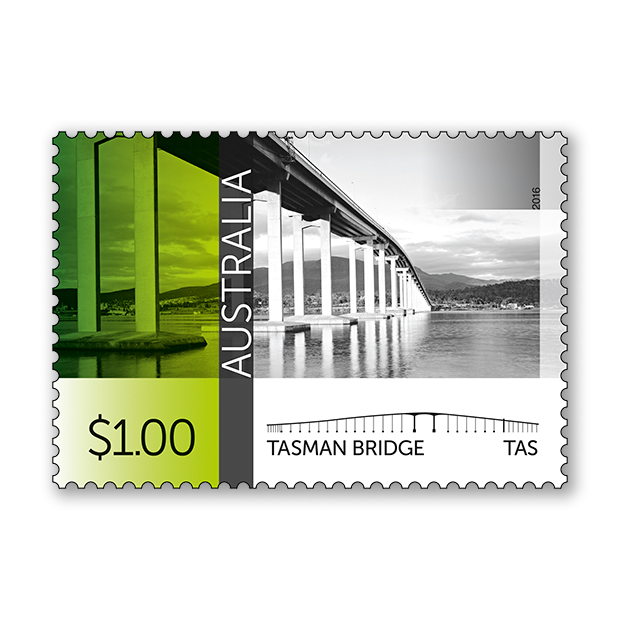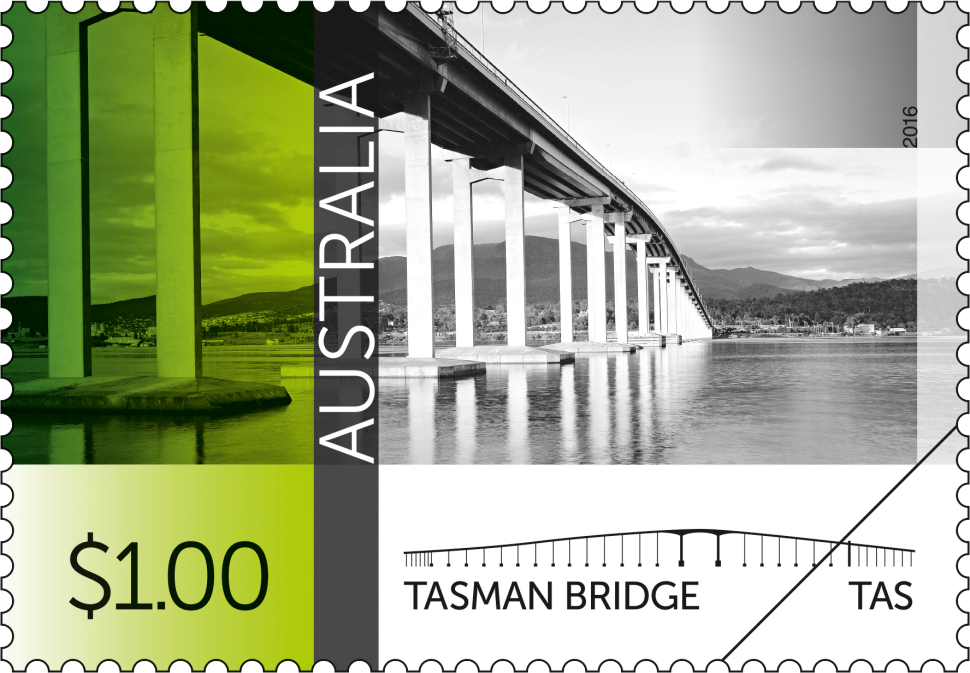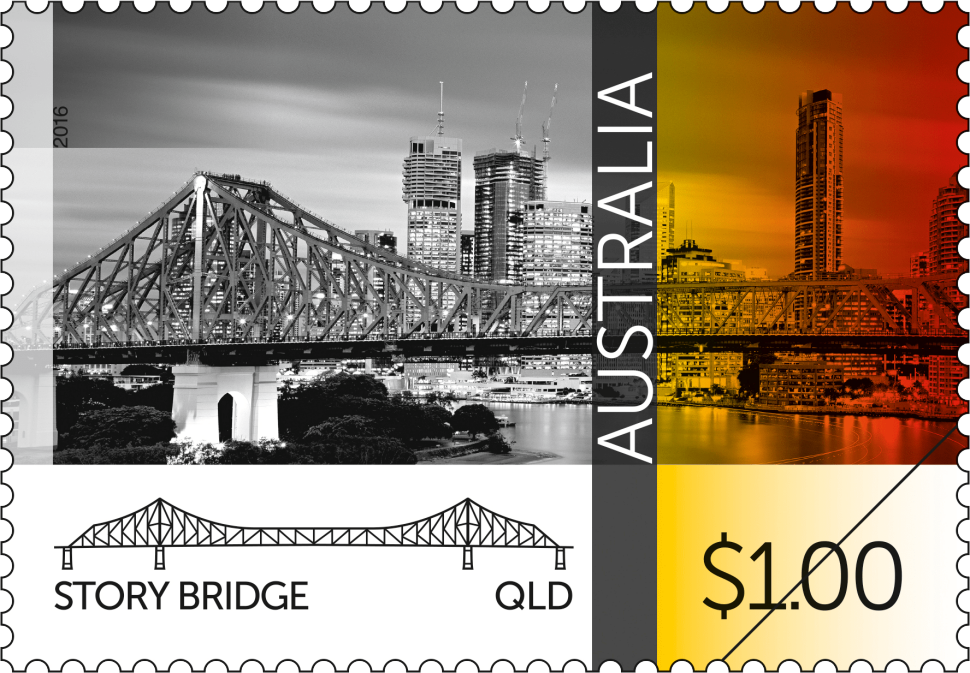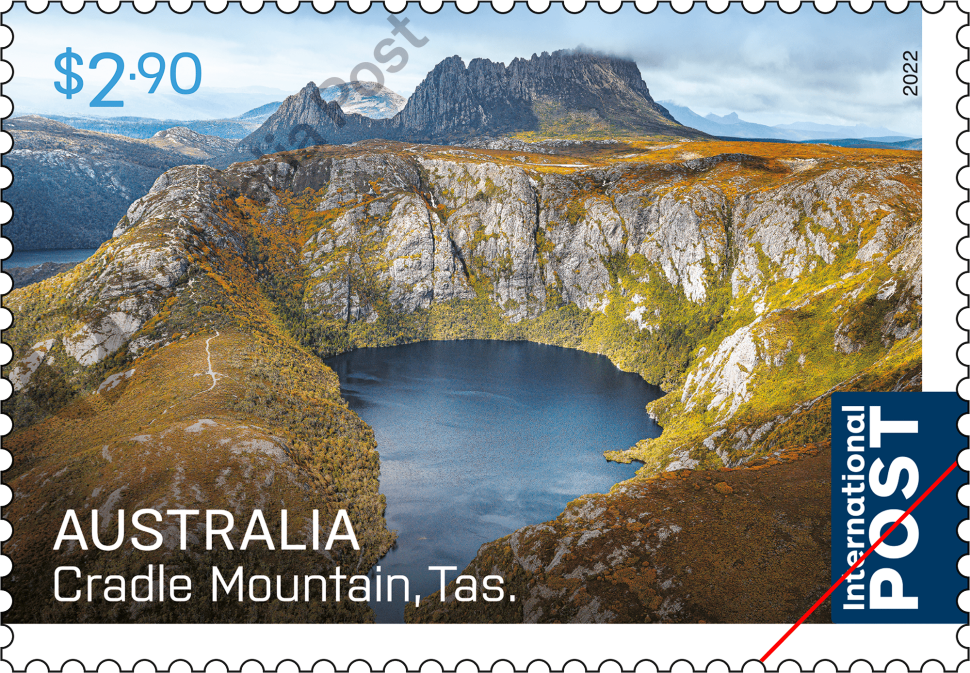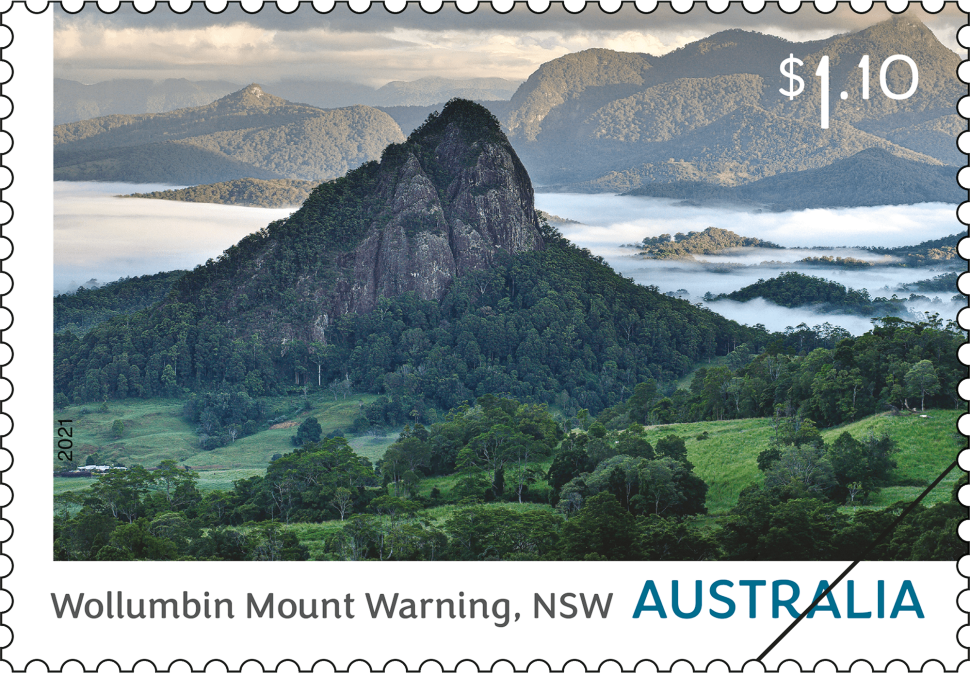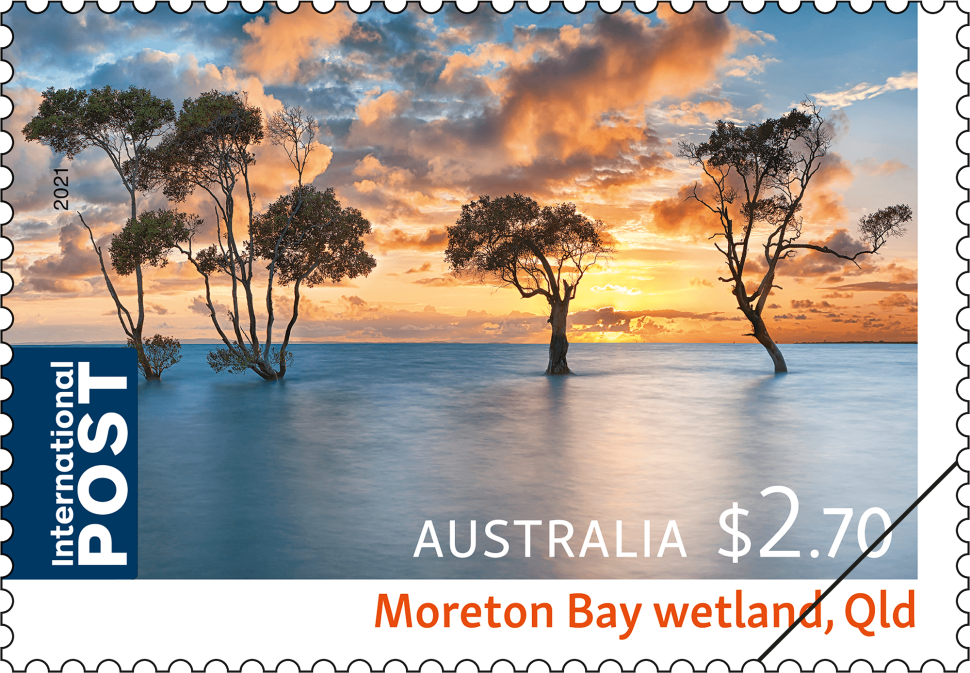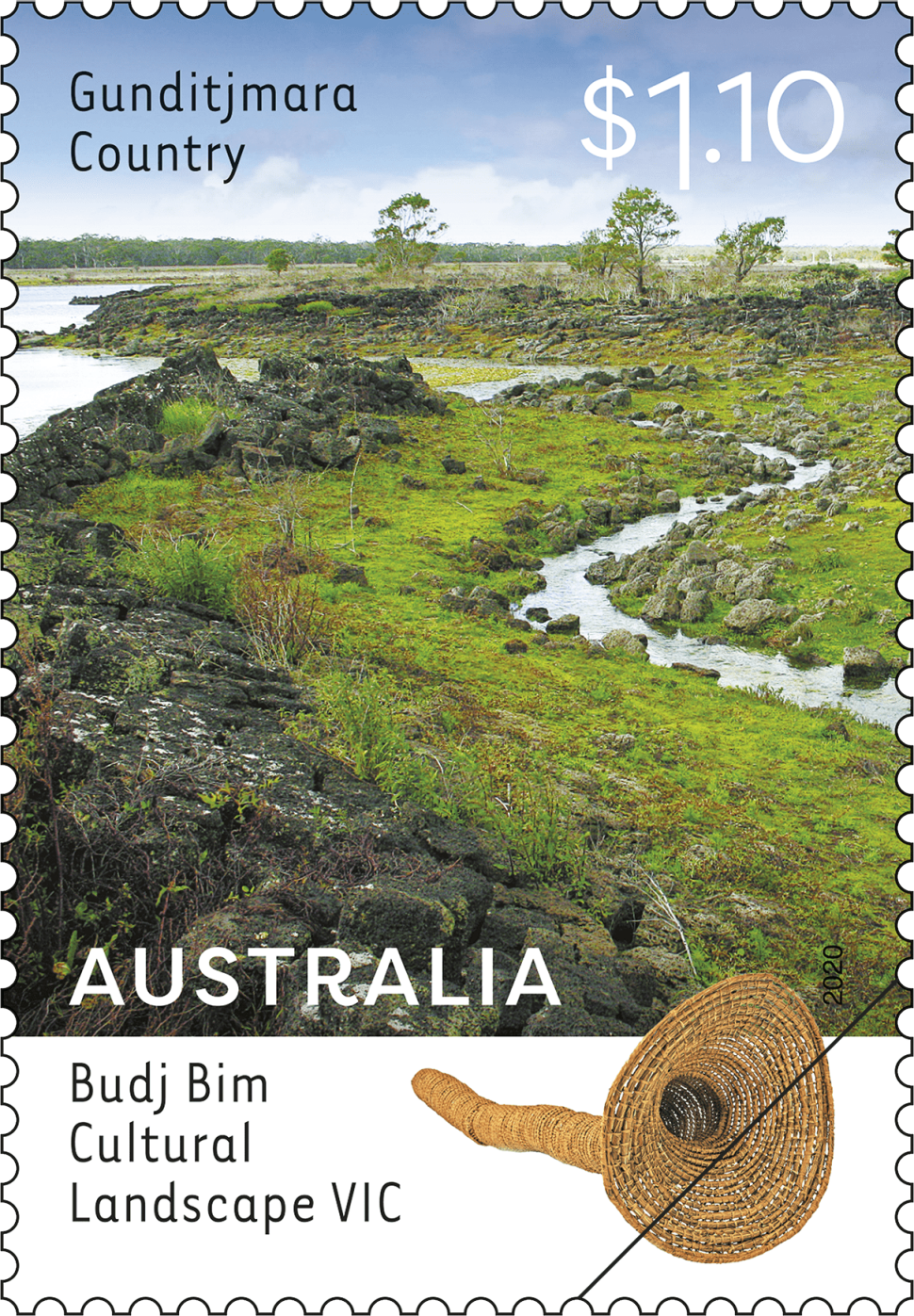Bridges are primarily built for road and rail transport as well as for pedestrian travel, but they are also amazing feats of engineering and construction.
Australia’s most iconic bridge, the Sydney Harbour Bridge, has been featured six times on Australian stamps, and a stamp of Richmond Bridge (the first bridge constructed after European settlement) was part of the Australian Scenes Definitive issue in 1976. However, this latest issue is only the second Australian stamp issue to exclusively feature a selection of Australian bridges (an issue of postage prepaid envelopes, Capital City Bridges, was also issued in 1995).
The Australian Bridges stamp issue, released on 15 March 2016, presents three architecturally and historically significant bridges of the 20th century. Designer Sean Pethick has used a combination of photographic and graphic elements to depict Tasman Bridge in Tasmania, Gladesville Bridge in New South Wales and Story Bridge in Queensland.
Designer
Seth Pethick
Technical specifications
- Issue date
- 15 March 2016
- Issue withdrawal date
- 30 September 2016
- Denominations
- 3 x $1
- Stamp design
- Seth Pethick
- Product design
- Lisa Christensen, Australia Post Design Studio
- Printer - gummed
- EgoTrade Pty Ltd
- Paper - gummed
- Tullis Russell Red Phos
- Paper - self-adhesive
- Fasson B100
- Printing process
- Offset lithography
- Stamp size
- 37.5mm x 26mm
- Perforations
- 13.86 x 14.6
- Sheet layout
- Module of 50 with design
- FDI postmark
- Gladesville NSW 2111
- FDI withdrawal date
- 13 April 2016
The five‐lane Tasman Bridge crosses the Derwent River, linking Hobart’s eastern and western suburbs. It is the main traffic route across the river and forms part of the Tasman Highway.Tasman Bridge replaced a floating pontoon bridge that had been built in 1943 but was no longer able to cope with traffic demand. Ironically though, soon after opening in 1964, commuter traffic demands increased to the point where road lanes had to be switched at peak hours to help traffic flow.The pre‐stressed concrete‐girder bridge has a total length of 1,395 metres, width of 17.5 metres and height of 60.5 metres. Between the main piers is a 94‐metre‐wide navigational channel, with a massive headroom clearance of 46 metres.
The Tasman Bridge tragedy of 1975
The Tasman is also a sobering reminder that bridges can be the subject of tragedy. On 5 January 1975, SS Lake Illawarra crashed into several of the bridge’s piers. This caused three 42‐metre deck spans to crash onto the ship. Cars plunged into the resulting gap, causing five people to lose their lives. The ship sank, causing the loss of seven crew members. The bridge did not re‐open until 1977, when an extra traffic lane was also added. 2015 was the 40th anniversary of the tragedy, which was marked by a commemoration ceremony, which included the closure of the bridge for 20 minutes and a minute’s silence.
Interesting facts about Tasman Bridge
- Plans for a bridge to link the Derwent River’s two shores near Hobart date to as far back as 1832.
- The total cost of the bridge was approximately £7,000,000.
- The bridge comprises a total of around 61,000 cubic metres of concrete, 5,200 tonnes of reinforcing steel and 117 kilometres of pre‐stressing cables.
- During the bridge’s closure, following the Illawarra, tens of thousands of residents from the eastern shore travelled to Hobart each day by ferry.
Gladesville Bridge is a four‐box, pre‐stressed concrete arch, with a span of 305 metres. It takes vehicle and pedestrian traffic across the Parramatta River west of central Sydney, linking the suburbs of Huntleys Point and Drummoyne.
The bridge replaced a two‐lane iron truss bridge built in 1881, which was the only road crossing of the river east of Parramatta until the Sydney Harbour Bridge opened in 1932. Its high water clearance allows large vessels to pass beneath it.
Planned in the 1950s to accommodate increasing traffic on Sydney roads, the bridge is described by the NSW Heritage and Conservation Register (on which it is listed) as a “bold and ambitious project”. It is actually one of a complex of three bridges, the other two being Fig Tree and Tarban Creek Bridges. These bridges were originally part of a larger proposed North West Freeway, to link Sydney to the northern suburbs through Newcastle. That project was abandoned in the 1970s, due to protests about the freeway’s intended route through inner city suburbs.
G. Maunsell and Partners, an engineering firm in London, designed the impressive bridge, under contract to the then NSW Department of Main Roads. The builders were Reed and Mallik Ltd (engineers from London) and Stuart Brothers, from Sydney, Australia.
Its design was a departure from existing bridges. Built at a time of significant growth during post‐war Australia, its architectural significance is noted by the heritage register:
“Gladesville’s design features, innovative construction methods and the jacking process set new standards for bridge design and construction and its success promoted the growth in specialist bridge design consultancies in Australia. It marked the transition from steel bridge technology including the Sydney Harbour Bridge towards concrete design, and confirmed the arrival of pre‐stressed concrete as a major bridge‐building material in Australia. It was the first major concrete arch bridge in the world built using precast segments and was one of the first bridges designed with the aid of a computer … the Gladesville Bridge remains as an engineering feat and a testament to the skill and commitment of all involved.”
Interesting facts about Gladesville Bridge
- When it opened on 2 October 1964 the bridge was, at 1000 feet (305 metres), the longest span concrete arch bridge in the world. It remained so until superseded in 1980 by the 416‐metre span Krk Bridge in Croatia.
- The bridge’s construction required 78,800 tonnes of concrete.
- The bridge’s arch is supported by concrete thrust blocks embedded into sandstone foundations on either side of the Parramatta River.
- The Royal Australian Institute of Architects awarded the bridge a Civic Design Award in 1965.
- Initially, the bridge comprised three lanes in each direction, but a fourth southbound has been added.
- On 1 October 2014 the NSW Government celebrated the 50th anniversary of the opening of the Gladesville Bridge, as well as the recognition of the bridge as an Engineering Heritage International Marker by Engineers Australia.
The heritage‐listed Story Bridge is the largest steel cantilever bridge in the country. It is one of Brisbane’s most notable landmarks.Story Bridge crosses the Brisbane River at Kangaroo Point. It opened in 1940, meaning that this striking bridge recently celebrated its 75th birthday. Story Bridge a major public works project at the time, creating a great deal of much‐needed employment during the Great Depression.From mid‐1935 to 1940 the bridge was known as the Jubilee Bridge, honouring King George V, but when it officially opened on 6 July 1940, it was named Story Bridge, after Sir John Story, a former vice‐chancellor of Queensland University.The bridge, constructed simultaneously from both ends, is considered to be of high architectural and historical significance. This from the Queensland Heritage Register:“The Story Bridge is important in demonstrating a high degree of technical accomplishment as the largest span metal truss bridge in Australia, as a major engineering and construction feat, and as evidence of the design skills and vision of Dr JCC Bradfield. The Story Bridge is significant also as a major work by Queensland contractors Evans, Deakin & Co. Ltd and Hornibrook Constructions Pty Ltd. Although modelled on the Montreal Harbour Bridge, completed in 1930, Bradfield emphasised that the grey steel elevation of the bridge was designed to harmonise with Brisbane’s natural skyline.”
Interesting facts about Story Bridge
- Story Bridge is the largest steel bridge designed, fabricated and constructed in Australia by Australians.
- Story Bridge was designed by JCC Bradfield, who also designed Australia’s most famous bridge, Sydney Harbour Bridge.
- Bradfield’s design team were said to have prepared around 600 working drawings.
- The bridge was considered a tremendous feat of engineering at the time of its construction, requiring 12,000 tonnes of steelwork.
- Approximately 95 per cent of the materials used were of Australian manufacture, and 89 per cent of the cost of works was expended in Queensland.
- Story Bridge took five years to construct, one year longer than originally planned.
- Extra precautions were taken to make the bridge flood proof, including embedding the main and anchor piers on the north side in solid rock.
- Construction techniques saw men working in watertight airlock chambers within steel caissons, up to 40 metres below ground level. This was the deepest airlock work done in Australia at the time.
- Currently the bridge is repainted every seven years using 17,500 litres of paint!
This content was produced at the time of the stamp issue release date and will not be updated.

